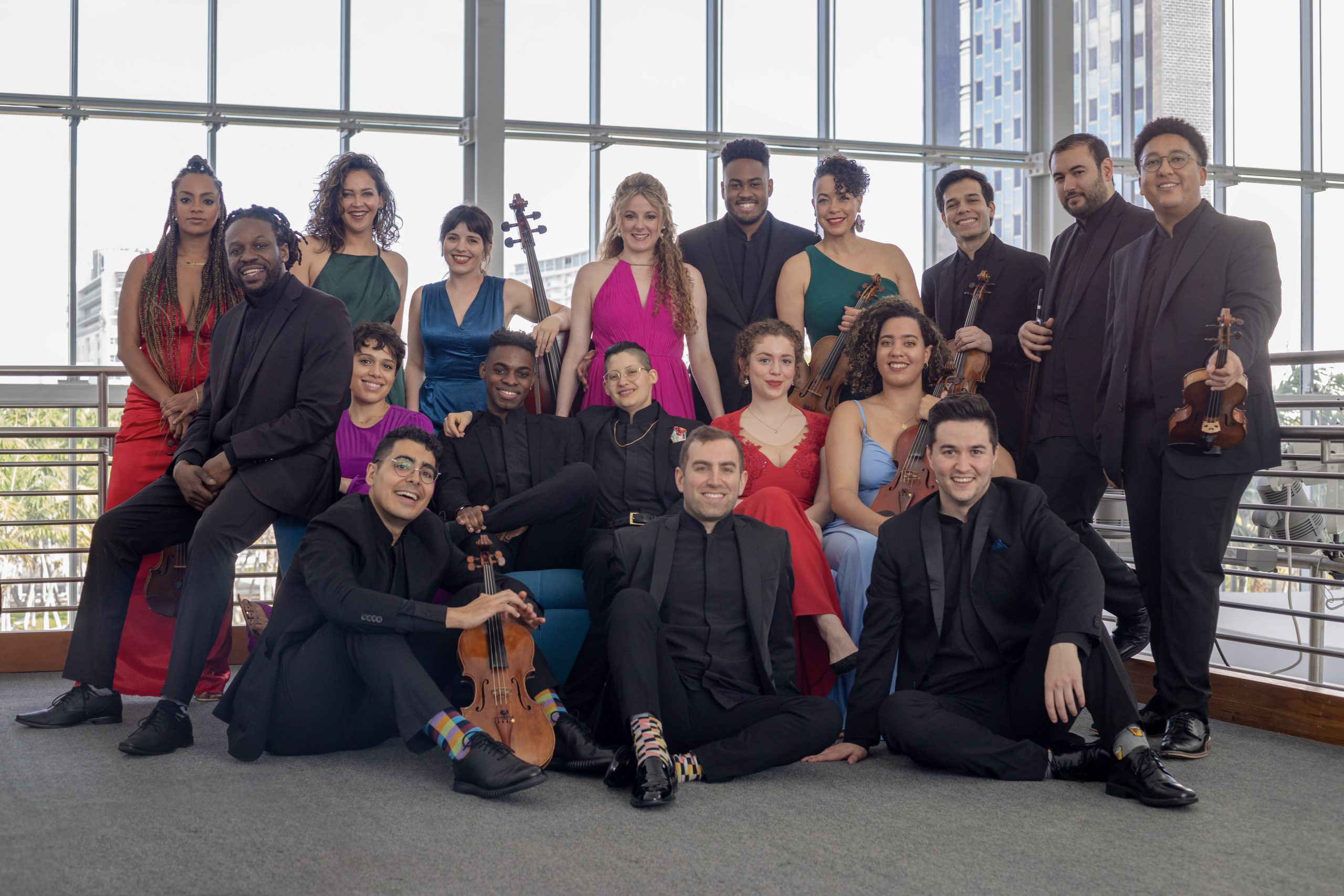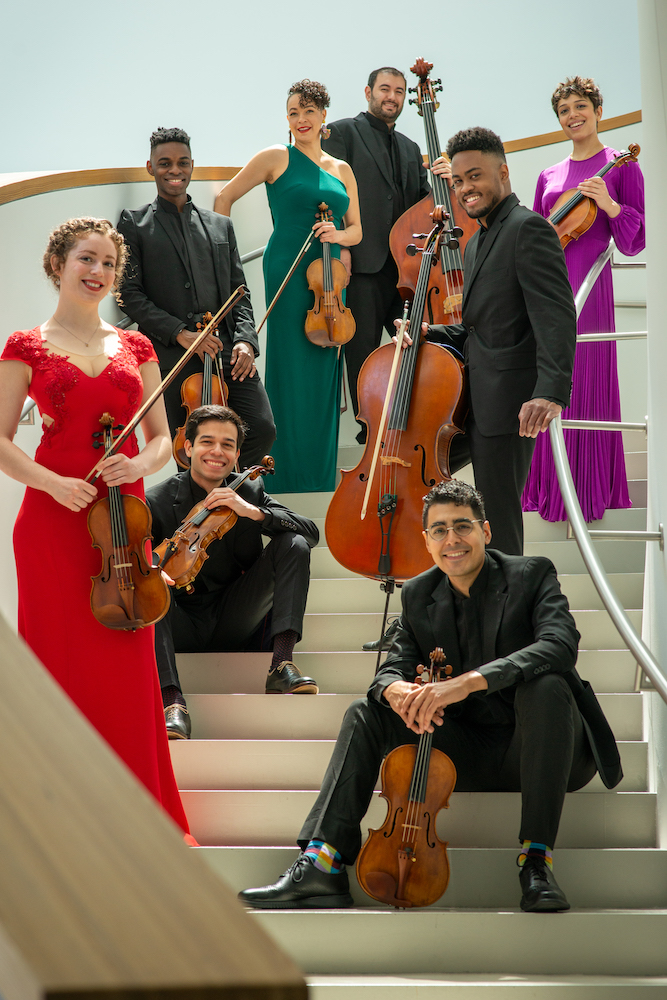The Symphonic Sphinx Virtuosi

The Sphinx Organization was founded in Detroit back in 1997, and much like Motown Records more than three decades earlier, it has championed composers and musicians of color – in this case in the realm of classical music. Sphinx’s vision for more than three decades has been to make classical music more representative of our communities, championing Black and Latinx musicians in an effort to evolve the classical music canon and achieve greater diversity in the arts.
Sphinx now has more than 1,100 alumni, among them the Catalyst Quartet – which has performed at Santa Barbara Museum of Art’s Mary Craig Auditorium several times over the years. But the Sphinx Virtuosi, the nonprofit’s premier touring ensemble founded in 2004, will be making its Santa Barbara debut when the 18-member group performs March 15 to conclude CAMA’s 2023-24 Masterseries at the Lobero Theatre.
The Sphinx Virtuosi plays a wide-ranging repertoire and particularly champions work by historically excluded composers, as well as new pieces it commissions. The CAMA concert is no exception, as the ensemble will perform four commissioned works, including two by SV members in Quenton Blache’s “Habari Gani” and Xavier Foley’s “Concertante for 2 Double Basses and String Orchestra, ‘Galaxy,’” plus Javier Farias’ “Abran Paso,” Andrea Casarrubios’ “Herencia.” The program will also feature “Dona Nobis Pacem’’ and “Exultate” from Sonata da Chiesa by Adolphus Cunningham Hailstork III, and “Sinfonietta No. 2, ‘Generations,’” by the late Coleridge-Taylor Perkinson.
We spoke with Canadian violinist Maïthéna Girault on a lunch break from a recording session with Sphinx Virtuosi, currently making its sophomore CD after its DG debut last year. Girault, who has Caribbean Island heritage, said she wasn’t familiar with Sphinx before moving to New York to study at the Manhattan School of Music, and only applied for its competition during the pandemic just to “push myself, not expecting anything.”
Q. Can you take me through some of the new pieces you’ll be playing?

A. Quenton Blache’s “Habari”is very exciting and virtuosic, with a theme of five going through the whole movement, kind of a play on the composer’s name, Quentin. Habari (which loosely translates from Swahili as “What’s new?”) is used during the celebration, Kwanzaa, and the piece is about imitating the chatter between people in a community. It’s so tightly wound in terms of rhythm, like a Swiss clock… Xavier Foley’s double bass concerto is very diverse, like Xavier. There’s some movie-like themes, a salsa section in the middle, and the double bass cadenza that gets pretty rock and roll, and some sections that sound more classical but always with a bit of a twist because Xavier is such a charismatic and very colorful composer.
Andrea Casarrubios’ “Herencia”was written for the ensemble with 18 individual string parts that beautifully weave in and out together. Herencia means both heritage and inheritance in Spanish, and the theme of the work is to express our journeys, the instincts and challenges and triumphs that everybody has gone through. So it’s very lyrical work, very passionate. There’s some singing in the middle, where the voices kind of create this halo around the string. It’s always a hit.
How is it to work with these living composers commissioned by the ensemble, two of whom are members?
One big advantage is you can ask them anything, find out the background of what inspired them to write the music. But there’s also a bit of a challenge to find our way in the music, because there’s not any performance culture behind it, minds who’ve studied and dug at the notes. We really have to find our voice in a short time. But that is a beautiful journey that I think we all really enjoy, a very satisfying and self-fulfilling feeling.
Which brings up the question of a self-conducted ensemble. There’s no music director to decide any of that, let alone lead the concerts. How do you make that work with 18 musicians?
It’s definitely democratic, very equal among us. The section leaders do tend to lead the rehearsals, but everybody chimes in. Over time we have really learned to communicate better with each other, and everybody is sensitive to when to say something, when to wait or hold back, and yet we always end up covering everything. There’s so many different approaches and ears and people listen for different things, which is a huge resource because it provides perspective. It’s a very harmonious and diplomatic process, and everyone is involved, instead of being passive and feeling like they’re just kind of another piece in the puzzle.
How about at the concerts?
We gesture at each other, which is very similar to what a conductor does. People are designated for those spots when we need to focus on something, but we move a lot and we listen to each other. Everybody knows the music well enough that they know other people’s parts, so they know how to fit in and how to exchange. So it’s really a matter of everybody being a leader because they know the whole score and how it fits together the way a conductor would.








